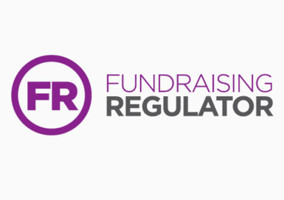Once an individual has used the Fundraising Preference Service to notify a charity that they would like to stop hearing from them charities will have 28 days act, the Fundraising Regulator said.
Speaking at an even held by the Institute of Fundraising Technology group in London last night, Daisy Houghton from the Fundraising Regulator confirmed that the Fundraising Preference Service would go live on 7 July 2017 and said that, once a suppression request had been made by a member of the public, the charity in question will have 28 days in which to cease contacting that person.
Houghton said that the 28 day timeframe was “the minimum amount of time we can expect charities to action a suppression request”, but said the public would also be warned that timeframe may not be achievable for some charities, particualrly in the case of direct mailing campaigns.
Once that initial 28 day window has passed, if an individual has continued to hear from that charity, the FPS will issue it with a follow-up notification.
“A follow up request will only come through to you if a member of the public has still had communications from you after 28 days. There is text on the public facing side of the website that says it may take some charities longer,” said Houghton. “Particularly if it’s a postal appeal, but 28 days is the minimum amount of time we can expect charities to action a suppression request.”
Houghton later said that, if a charity continued to repeatedly contact an individual who had suppressed it through the FPS and ignored its 28 day follow up request, the Fundraising Regulator itself would be powerless to issue that organisation with a fine.
But Houghton said repeated contact from a charity to an individual signed up to the FPS would be treated as a section 11 breach of the Data Protection Act and could be followed up by the Information Commissioner’s Office.
She said that all registered charities in England and Wales would be able to be suppressed by a member of the public through the FPS, but said that charities would not be charged for the service. Instead, the system will be funded by the regulator’s levy on fundraising spend and by registration fees.
Charities will be allowed ‘three active users’ per organisation
According to Houghton, each organisation will be allowed three active users per organisation who will be registered on the FPS portal. Alongside signing some terms and conditions, the active users will be required to register their email address within the system, as those three users will be the one receiving the suppression notifications from the system.
Each user can then automate how often they receive a suppression notification email from the FPS – be that instantly, daily or weekly. Once a notification is received, Houghton said that the notification will appear in an active user’s inbox, however the notification itself was “only an alert and all suppressions will have to be managed from the FPS website”.
Syrenis Ltd, the external company which has designed and will manage the technical aspects of the FPS for the Fundraising Regulator, said it would be supporting charities to sign up to the FPS through “guidance, webinars, videos and a 24-hour helpline”.
Charities will also be able to place their organisational logo on the FPS, as well as “200 characters of information describing your organisation and the work that it does” to help members of the public differentiate on the system.
FPS ‘purely transactional website’ for public
Houghton also said that the FPS will be a purely transactional website for the members of the public, as the regulator “is assuming that most people are coming there only to sign up for the service”.
In Fundraising Magazine
She said that an individual will be able to either register themselves on the FPS, or “sign up for someone else on their behalf” and that an individual would be able to suppress three organisations per request.
The FPS will allow individuals to identify the channels they wish to suppress and the various charities through either their name, logo, or registered charity number. Once registered, the individual will then be issued with a code from the FPS “either through SMS or email, just like with internet banking,” said Houghton.
Houghton admitted, during a question and answer session, that the Fundraising Regulator had not made any projections about how many people will sign up to the FPS, either in the first year, or indeed at all. However, she said the regulator would know “relatively quickly, within three months or maybe less” of launch how popular the system is likely to prove.
Related Articles












